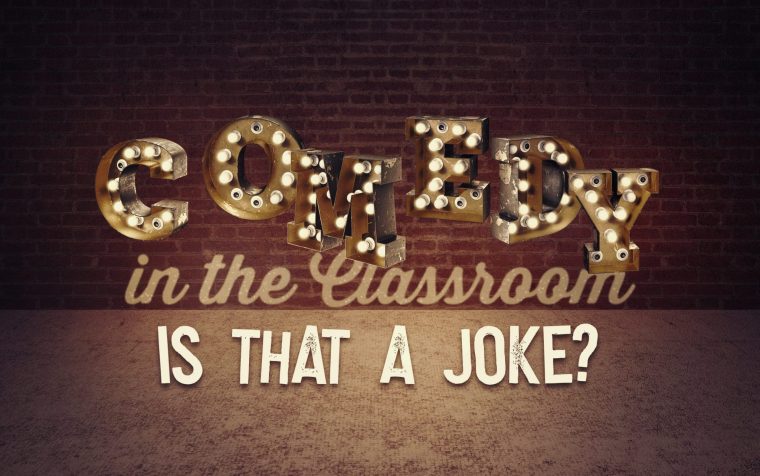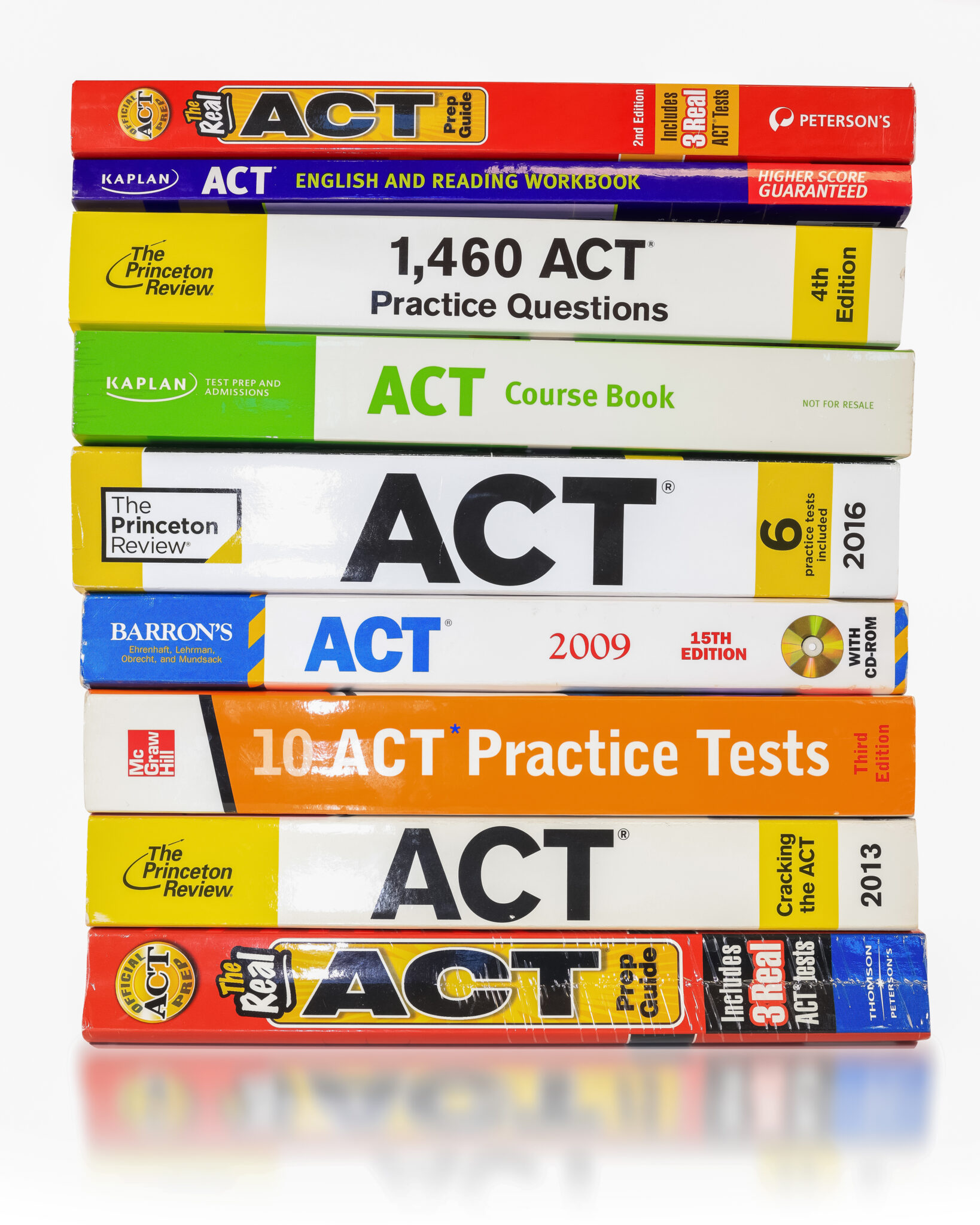What is the most essential building block of comedy? Is it how well a joke is constructed? Could it be how true a skit is to life? Maybe it is how wacky someone’s face can contort or how their body poses to emphasize a hilarious line?
Comedy is about one thing and one thing only—the audience. Without an audience, there is no laughter, there is no entertainment, and there is no moment of relief from what we know to be a strenuous, tiresome, and tough world (particularly in education). Every great comedian must do the same thing every great teacher must do, connect with their audience. If a comedian tells a joke and there is no audience to hear it, are they still a comedian? (No, and if they are telling jokes to the wall, they may need to see a licensed professional.)
Should every teacher become a comedian? No, but I believe comedy can help.
I’ve been in education for more than a decade, and I’ve been a comedian for nearly 15 years. In that time, I cannot begin to tell you how many classrooms, school hallways, teachers’ lounges, or faculty meetings lack laughter, smiles, and a sense or prideful joy for being in a place of learning and investigation. What happened? We live in an educational society that would rather text you an emoji of a face laughing to tears instead of cracking a small silly smile themselves. I have seen firsthand that there are so many schools burdened with overcrowded classrooms, a relentless pressure to pass a standardized test, and an overall lack of supplies and support. Let’s face it, educators need a drink. I mean a laugh. We need a six pack of ice cold laughter lite.
Curtis Needs A Ride, my improv comedy troupe, advocates for educators to incorporate the foundational ideas of improv comedy into their classrooms. In our trainings, we dig deep into the transformative improv comedy ideas such as “yes, and . . . ,” relentless support, and treating our fellow performers (or in this case, students) as brilliant, creative, and varied forms of genius. Allow me to explain.
The most foundational idea in improv comedy is “yes, and . . .” When an improviser is on stage and tasked with the mission to create a scene out of thin air, he or she must embody a certain attitude while listening to their scene partner. In improv, there is no script or plan to achieve a successful scene, just a general approach. When listening to a fellow improviser say a line in a scene, it is critical to receive their idea and build on it. As a comedian, I need to start with the premise that their idea is good, meaningful, and worthy of my support. “Yes, and . . .” accomplishes this by saying “yes,” your idea is a valuable, “and” I want to build on it and add another line to create something special. In education, do we listen to the ideas and thoughts of students with the assumption that they are worthy, intelligent, and valuable? As educational leaders, do we extend a “yes, and . . .” to teachers with their ideas as well?
Building a “yes, and . . .” culture takes time, patience, and a commitment to being supportive. We have to fear the opposite of “yes, and . . . ,” the dreaded “no, but.” Building a “yes, and . . .” mentality with teachers and students is similar to building motivation in students. I have found that teachers are quick to bring up how some students are not motivated, but very few teachers are committed to doing activities in their classrooms that actually build motivation. “Sorry, motivation is not on my list of standards, mister.”
The good news: There are a tremendous amount of improv activities that flex and build the “yes, and . . .” muscle. We love having students and teachers participate in a game called “Conducted Story.” In this game, a line of people stand shoulder to shoulder in a semicircle and face a conductor (similar to a choir or orchestra). The conductor points to a member of the semicircle and asks them to begin a story with a generic line such as, “Once upon a time . . .” From there, if the conductor is pointing at you, you are required to continue a story from where the last person left off. Then the conductor points to another member of the semicircle who has to continue the story and so on. Each time, we go on an adventure that is wacky, hilarious, and brand new. Most importantly, the adventure we go on is 100% supported by every member of the group. In fact, an activity like this can only go poorly once someone has decided to deny or reject the ideas of the previous member. Activities like these can begin to build within students an understanding that they can be heard, their ideas are valued, and they can expect peers and teachers to support their decisions.
As a reflection for your own classroom/school/household, ask yourself these questions: Are students given the chance to share their ideas, take risks, and be creative? Or are students risk averse? The research suggests students expend effort where they perceive their chances of success are better (Ogbu, 1978). Do our classrooms embody this idea? Do students and teachers feel like they can be successful in our schools? Can they fail, dust off their mistakes, and try again? “Yes” you can be successful, “and” you are expected to fail along the road to success. A “yes, and . . .” attitude is important because we are developing a self-regulation within students to deal with their failures and keep fighting through until they find success, known in the education world as grit (Duckworth, 2016), task commitment (Renzulli & Reis, 1997, 2014), and growth mindset (Dweck, 2006). Plus, we need to be willing to support students through these moments of failure. In Curtis Needs A Ride, our motto is “Relentless Support Creates Limitless Potential.” Whether it is an improv scene or a student in class, if support is not expected, then risks will not be taken.
Although I have never been in your classroom or school, I know your students have something in common with the ones I have taught. All students have struggles and obstacles to fight. As the educator in the classroom, what am I doing to help students build a sense of self-efficacy to get through those struggles and obstacles? Albert Bandura’s (1997) work illuminated the importance of addressing self-efficacy, and I believe improv comedy concretely demonstrates how to build self-efficacy through relentless support. When creating a scene, improvisers must get through several obstacles typically revolving around the unknown. What is my scene partner going to say? How am I going to think quickly enough to respond? What if I am not funny? Do people see the Cheetos stain on my jorts? Getting through these obstacles is very difficult until you experience the support of your scene partner. The pressure of having to say something or be funny dissipates when a scene partner listens to what you have to say, responds, and supports the idea you just developed. Then, you begin to see how your idea blossoms into a valuable piece of a puzzle to create a meaningful and interesting scene. This is the essential difference between improvised comedy and stand up. In stand up, you are alone and must rely on your skills to write hilarious material with a build-up and a punchline. In improv comedy, as each one of Curtis Needs A Ride’s audience members experience, you see a group of people working as a team and finding success by tackling obstacles together. I cannot begin to explain what this has done in my life in terms of building my own self-efficacy.
The work of Carol Dweck (2006) on growth mindset is essential to improv comedy as well. After a comedian is committed to “yes, and . . .” ideas, they need to exhibit effort on a pathway to success. After a teacher is committed to showing a student they can “yes, and . . .” their ideas, we need to show students that their effort will now lead them to success. We model this in improv by having a multitude of activities that simply require effort. For instance, we have a game called “Environment” where we have teachers or students choose a location anywhere in the world. Then, they must physically represent the things we would typically see in that environment. If we are at Starbucks, we need to see a barista. If we are at the State Fair of Texas, we need to see Big Tex. If we are at Wal-Mart, we need to see the customer regretting their choice not to go to Target. All this game takes is effort. Even if you stand in a certain spot, you can justify yourself to be a tree or hipster coffee drinker. Once a team of people commit to the game and physically represent the variety of objects and people seen in these locations, we have an amazing display of teamwork, support, and effort. When you expend this effort, you begin to see the value of it as it intertwines with the effort of others. Together, we are successful because we worked together, tried, and created something meaningful. With dedication to a simple activity like this, a culture can change. Teachers and students will begin to see that effort is an important driver of success.
To teach these foundational improv ideals, we need to commit to having a strengths-based pedagogy. When students walk through the door, do we see deficits from parents not doing enough, or previous teachers not covering this or that standard? Or do we see students whose strengths are limitless? To hearken to researchers like Joseph Renzulli and Sally Reis (1997, 2014), do we see students with talent begging to be developed?
As a former teacher in the classroom, I remember the days of students who tended to get low scores on tests, homework, and anything else I asked them to work on. To me, there came a point where I had to ask myself, if these students are not good at school (I found several of my G/T students fell into this category), what are they good at doing? Where do they have a high ability (even if it is outside of the realm of school)? Where do their interests lie? Once I started to ask this question, it opened up my eyes to so many new avenues for success. I remember discovering a gifted student who loved weather, a special education student who was a brilliant sketch artist, and a struggling average student who failed often, but had boatloads of charisma as a leader. Once I saw these students as capable of being extraordinary in fields outside of my specific subject area, I had to ask myself: How could I utilize their strengths and interests to drive my instruction? I know this student does not feel successful in math, but can I use his love of the weather and willingness to put effort into learning about weather patterns to teach algebraic concepts? Can I equip a student who does not want to work hard to learn her math facts to use her passion to draw to learn mathematical ideas beyond anything she has learned before? If I know this student is a well-thought-of leader at every table she sits at, can I use her skills to drive her to success in my math classroom?
Using the foundational tenets of improv comedy, the answer to all of the questions above is, “yes, and” so much more. You can use improv comedy in your classroom to inspire a “yes, and . . .” culture, to relentlessly support your students, to build effort, and to treat your students as smart and capable. Improv games utilize relentless support and a celebration of talents to embrace all who give effort on a pathway to success. Plus, they are a whole lot of fun—and who doesn’t need a good tall cool glass of fun?
References
Bandura, A. (1997). Self-efficacy: The exercise of control. New York, NY: W. H. Freeman.
Duckworth, A. (2016). Grit: The power of passion and perseverance. New York, NY: Scribner.
Dweck, C. (2006). Mindset: The new psychology of success. New York, NY: Ballantine.
Ogbu, J. U. (1978). Minority education and caste. New York, NY: Academic Press.
Renzulli, J. S., & Reis, S. M. (1997). The Schoolwide Enrichment Model: A how-to guide to educational excellence. Mansfield Center, CT: Creative Learning Press.
Renzulli, J. S., & Reis, S. M. (2014). The Schoolwide Enrichment Model: A how-to guide for talent development. Waco, TX: Prufrock Press.
Michael Flusche began his educational career in Fort Worth ISD as a substitute in 2008. From there, Flusche taught middle school mathematics and transitioned into K–8 Coordinator for the Advanced Academics department. As a coordinator, Flusche supports several campuses as they strive to meet the needs of gifted and talented learners through curriculum, instruction, and schoolwide support.







